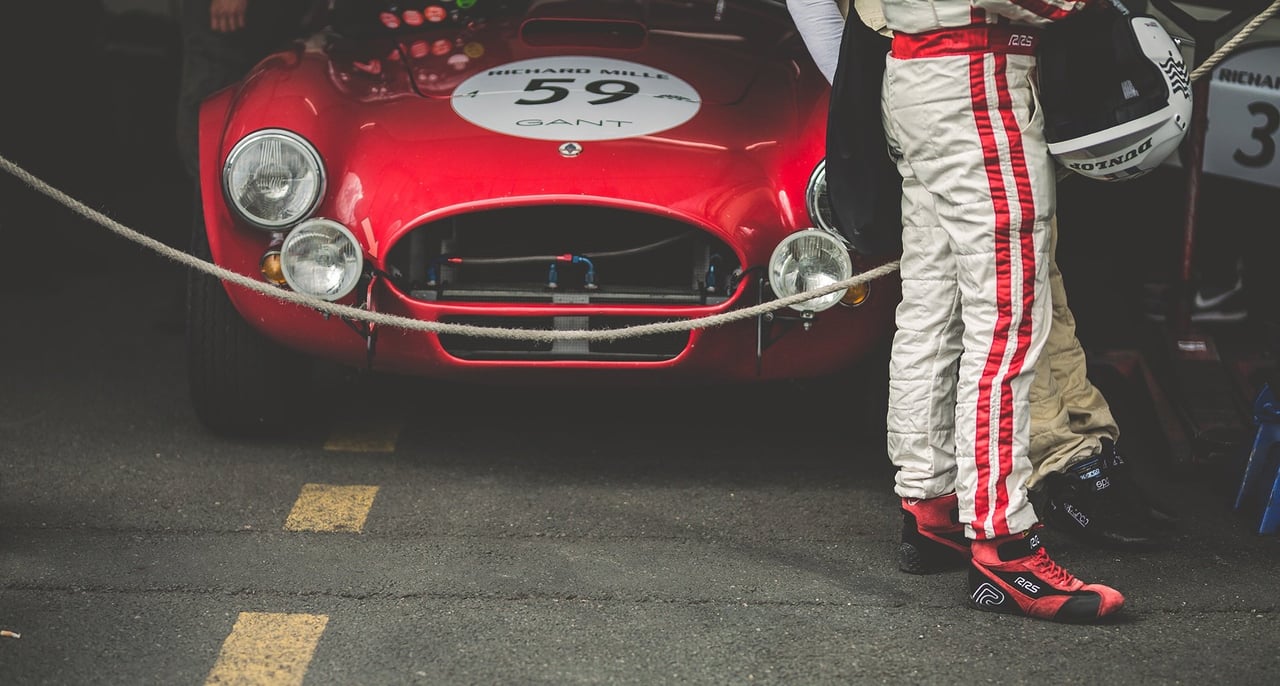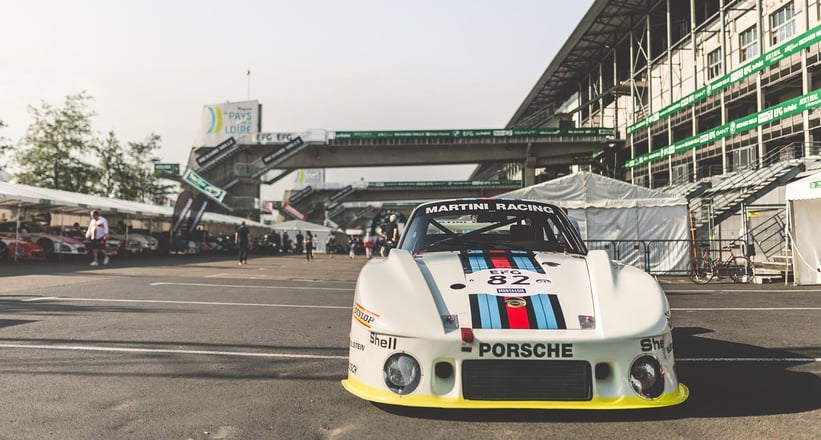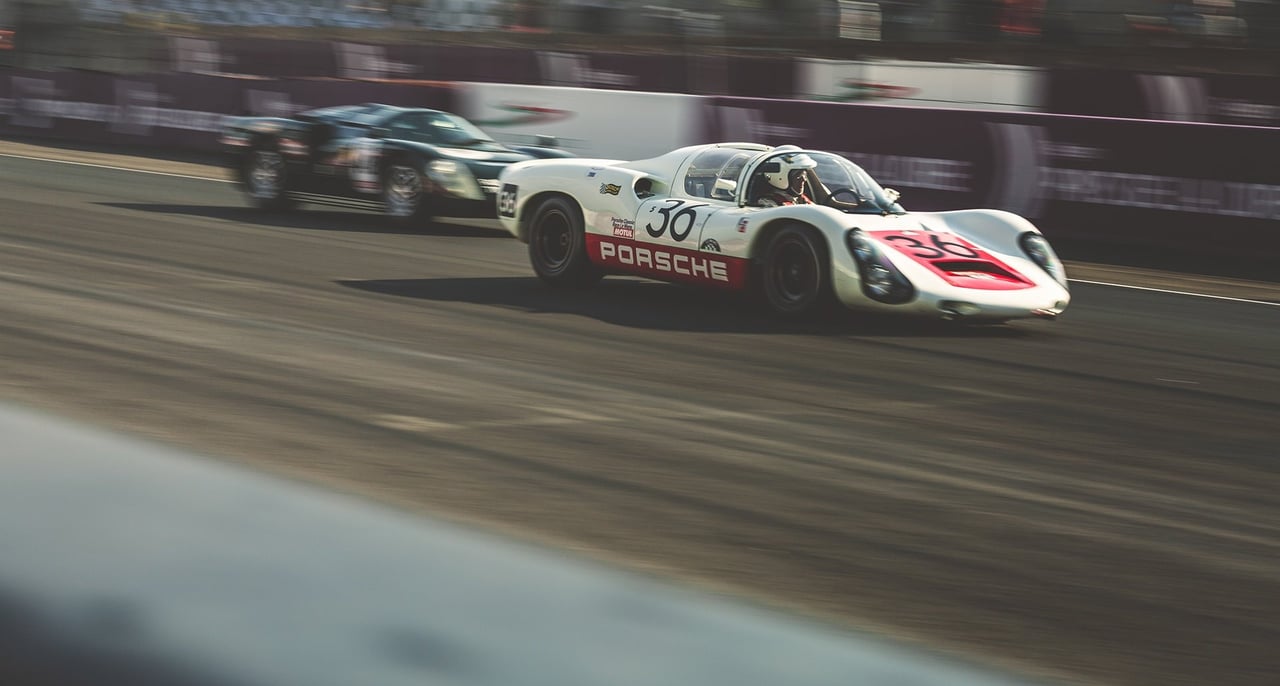

Returning to Le Mans, be it for the 24 Hours of the Classic, is always a treat. There’s an almost tangible sense of history there that so few tracks around the world can replicate. We got up extra early on Friday morning so we could stroll around the multiple paddocks, sprawled somewhat confusingly across different levels and locations, and meet the hundreds of entrants in relative peace and quiet. As various mechanics gently roused cars from their slumbers, so we sipped our espressos and gradually woke up, too.



The sheer variety of machinery at Le Mans Classic is the first thing that strikes you – the six competitive ‘plateaux’ comprise over 500 cars and span almost six decades, from the race’s inception in 1923 to 1981. Throw in a special grid for over 40 ‘ground-effect’ Group C cars and a new high-speed demonstration of modern endurance racers built up until 2014, and you’ve got an event in which you’re able to witness pre-War Bugattis and Bentleys; Jaguar D-types and Ferrari 250 GT ‘SWBs’; Porsche 935s and Ferrari 512 BBLMs; and diesel-powered LMP1 prototypes, all in the same day.



In what was a particularly tough opening act to follow, over 70 cars from the newly formed Global Endurance Legends series were the first to make their tentative steps out onto the circuit on Friday morning. The very strong entry list was telling of the increased interest in these modern-era GTs and prototypes. After a worryingly slow lap behind a safety car, the braying pack was let loose and what a spectacle it was.


A bright yellow Ferrari 333SP set off like a greyhound leaving the traps, closely followed by Emmanuel Collard driving the very Toyota GT-One he drove at Le Mans in 1999. A ground-shaking Saleen and several Vipers mixed it with howling Ferrari 550 GT1s and a McLaren F1 GTR, while special and significant prototypes such as the Bentley Speed 8, Audi R8, and Peugeot 908 HDi FAP looked as mind-bendingly quick as they always did. Our favourite, though, was probably the Panoz Esperante GTR-1 – it was never much cop in its day, but dear Lord it makes a fantastic noise!



The glory days of Group C were revived when a grid of over 40 wedge-shaped prototypes in a multitude of iconic liveries stormed the circuit. Friday’s twilight qualifying session was particularly memorable occasion – we trekked up to the Dunlop Curves to witness their ‘ground effect’ in action, and the rate at which they change direction, threading through the series of apexes with pinpoint precision, is simply astonishing.


Silk-Cut Jaguars recalled the British marque’s success at La Sarthe in the 1980s – and no doubt calmed the nerves of the anxious Brits in attendance anticipating Saturday evening’s World Cup quarter-final against Sweden. It was the brace of Peugeot 905s, though, both of which raced at Le Mans in 1999, that are seared into our memories. Their naturally aspirated V10s shrieked like a Formula 1 car and the gunshot-like bangs on every upshift pierced our eardrums and went straight to our core.



A quirk of Le Mans Classic is the organisation, or rather lack of. Walking between the paddocks, for example, is a feat in itself – no one appears to know where they’re going (signposting is either absent of vague, at best) and the marshals and Gendarmes range from nonchalant to irate. Add 31-degree heat and multi-million-euro racing cars that appear behind you with no prior warning and nibble your ankles, and the whole experience is quite disconcerting!



Porsche doesn’t need an excuse to throw a birthday party, and given the Stuttgart marque’s inherent connection to Le Mans, it seemed only right that its 70th anniversary would be marked in style. A race of 70 classic Porsches, ranging from two-litre 911s to 904s, 906s, and 908s, took place on Saturday morning, sending the sound brutish roar of air-cooled engines around Le Mans.



Though the early pre- and post-War grids are entertaining, the visceral feast of sight and sound of the later plateaux are where the Le Mans Classic really come alive. Trying to keep track of the races themselves proved tricky when we weren’t cocooned in the air-conditioned haven of the media centre, but we got the impression that the competition was of less importance than at other events such as Goodwood.


Those competing, be it gentlemen drivers chasing the ultimate historic thrill or former professionals reminiscing about their experiences, were simply revelling in the chance to race on this history-steeped circuit. That 10 former Le Mans winners – including Romain Dumas, Henri Pescarolo, and Jochen Mass – were racing is telling of the lure and appeal of Le Mans. It gets under your skin!

Saturday’s schedule of races was such that the faster cars were in action through ‘golden hour’ and into the inky darkness of the night. As we headed to Arnage corner to settle in for the night shift, we somehow managed to blag our way onto a campsite slap-bang next to the Porsche Curves. The ultimate test for both man and machine, the Porsche Curves are a series of flowing bends with ever-so-slightly tighter apexes the further round you get. And if you really want to see what a racing car is capable of, this is the place to watch.


The harem of GT40s leading Plateau 4 made the tailing Cobras look like they were standing still, while the more aerodynamically advanced prototypes in Plateau 5 – including several Porsche 917s, two Ferrari 512s, a whistling turbine-engined Howmett, and a Matra MS670 whose soul-stirring wail will forever be in our hearts – were a joy to watch as their drivers dug further into their lockers with every passing lap.

There can be few greater thrills for a racing driver than contesting Le Mans by night – and the same can be said for those spectating. Standing on a heaving raised bank deep in the forest at Arnage, Mulsanne corner, or the Porsche Curves, you hear and feel the braying packs of cars long before you can see them. The loudening rumble rolls across the forest and through the ground, up through your body and deep into your soul, instantly sending every fibre of your being into sensory overload. Just what is it about blinding headlights, glowing-hot brake discs and a lick of flame that makes watching racing in the dark so mesmerising?



And there’s the point – the Le Mans Classic is probably the only event in the world where the cars, as sensational as they are, play second fiddle. It’s the circuit itself that takes centre stage. It’s a truly magical setting where, even in the surrounding sleepy towns and villages, the history and heritage of the place make themselves felt. And a record 135,000 fellow attendees were clearly ‘infected’, too.



It was hard not to feel a tinge of sadness as we packed up the car and headed back to Blighty, particularly with the achingly long two-year wait until the next event. That said, the countless memorable moments and their accompanying sounds and smells will remain with us for a very long time to come. Well done, Peter Auto, and until next time!
Photos: Robert Cooper for Classic Driver © 2018














































































































































